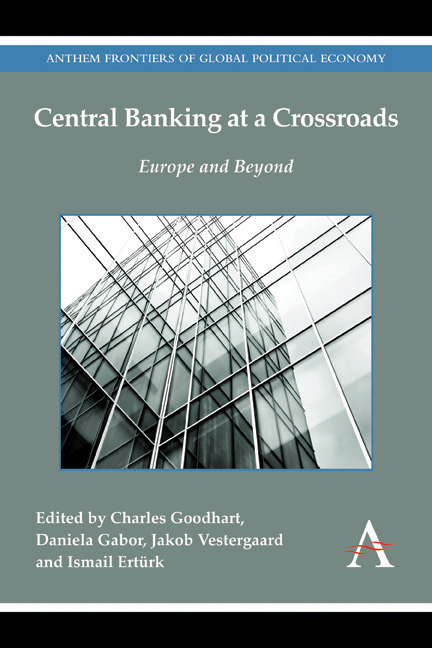Book contents
- Frontmatter
- CONTENTS
- Preface
- 1 Introduction
- Part 1 Bank Capital Regulation
- 2 Constraining Discretion in Bank Regulation
- 3 Fallacies and Irrelevant Facts in the Discussion on Capital Regulation
- 4 Complexity, Interconnectedness: Business Models and the Basel System
- 5 At the Brink of Insolvency: Shallow Recapitalization Exercise Fails to Bolster Europe's Ailing Banks
- Part 2 Bank Resolution
- Part 3 Central Banking with Collateral-Based Finance
- Part 4 Where Next for Central Banking?
- List of Contributors
- Index
4 - Complexity, Interconnectedness: Business Models and the Basel System
from Part 1 - Bank Capital Regulation
Published online by Cambridge University Press: 05 December 2015
- Frontmatter
- CONTENTS
- Preface
- 1 Introduction
- Part 1 Bank Capital Regulation
- 2 Constraining Discretion in Bank Regulation
- 3 Fallacies and Irrelevant Facts in the Discussion on Capital Regulation
- 4 Complexity, Interconnectedness: Business Models and the Basel System
- 5 At the Brink of Insolvency: Shallow Recapitalization Exercise Fails to Bolster Europe's Ailing Banks
- Part 2 Bank Resolution
- Part 3 Central Banking with Collateral-Based Finance
- Part 4 Where Next for Central Banking?
- List of Contributors
- Index
Summary
Abstract
The main hallmarks of the global financial crisis were too-big-to-fail institutions taking on too much risk with other people's money: excess leverage and default pressure resulting from contagion and counterparty risk. This paper looks at whether the Basel III agreement addresses these issues effectively. Basel III has some very useful elements, notably a (much too light “backup”) leverage ratio, a capital buffer, a proposal to deal with pro-cyclicality through dynamic provisioning based on expected losses, and liquidity and stable funding ratios. However, the paper shows that Basel risk weighting and the use of internal bank models for determining them leads to systematic regulatory arbitrage that undermines its effectiveness. Empirical evidence about the determinants of the riskiness of a bank (measured in this study by the distance to default) shows that a simple leverage ratio vastly outperforms the Basel T1 ratio. Furthermore, business model features (after controlling for macro factors) have a huge impact. Derivatives origination, prime broking, etc. carry vastly different risks to core deposit banking. Where such differences are present, it makes no sense to have a one-size-fits-all approach to capital rules. Capital rules make more sense when fundamentally different businesses are separated.
I. Introduction
The Basel Committee of Bank Supervisors (BCBS) has continued to lead the process of bank microprudential reform since the global financial crisis in 2008/9, evolving a set of proposals collectively referred to as Basel III. The latter is a vast improvement over Basel II, which created an across-the-board cut in capital for banks prior to the largest crisis since the 1930s. The BCBS proceeded to revise Basel II by adding onto it a vast set of complex new rules. The primary focus of the BCBS is on capital rules applied to risk-weighted assets; it has not been charged with examining the structural business models of banks to which these capital rules apply. By necessity, the process has been one of policy “on the run,” which was not able to benefit from any evidence-based research.
- Type
- Chapter
- Information
- Central Banking at a CrossroadsEurope and Beyond, pp. 51 - 74Publisher: Anthem PressPrint publication year: 2014



